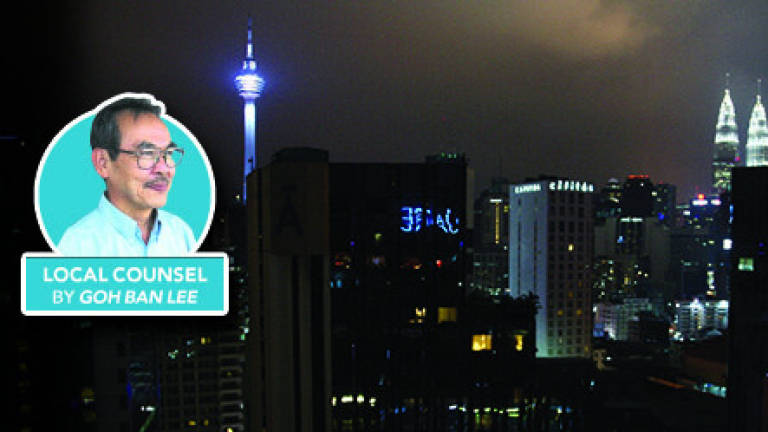Super city in the making

FROM a little tin mining settlement in the 1850s, Kuala Lumpur has come a long way in terms of physical development. Being the capital of Malaysia, it is the country's face and a symbol of national pride. It was proclaimed a city in 1972. On Feb 1, 1974, Kuala Lumpur became a Federal Territory.
Today, the city is a very interesting place. Besides the wide variety of delicious food and diverse cultural outfits, it has a modern and impressive built environment, including skyscrapers such as the 451m-tall Petronas Twin Towers. There are also British colonial-era buildings, like the Kuala Lumpur Railway Station and the Sultan Abdul Samad Building. In addition, there are many elevated highways, posh hotels and the impressive KLIA airport, although it is located many miles from Kuala Lumpur.
There is also the Klang Valley Mass Rapid Transit system for better connectivity and to ease traffic congestion on roads and highways. The Mass Rapid Transit links the heart of Kuala Lumpur with shopping centres and residential enclaves surrounding the city.
Furthermore, there is going to be the much anticipated Digital Free Trade Zone (DFTZ) to create a new Kuala Lumpur Internet City in Bandar Malaysia. The DFTZ was mooted by Prime Minister Datuk Seri Najib Abdul Razak, with the founder of Alibaba Group, Jack Ma, as the adviser. This is to boost digital economy and create jobs especially for tech-savvy professionals. The prime minister announced this to a packed audience at the Global Transformation Forum held at Kuala Lumpur Convention Centre last week.
InvestKL, a government entity formed by the Ministry of International Trade and Industry and the Federal Territories Ministry, has been tasked to steer Kuala Lumpur to become a "super" city. Its objective is to attract large multinational corporations to set up business in the Klang Valley, also known as Greater Kuala Lumpur.
And recently, there was a forum organised by the Harvard University Graduate School of Design and Aecom, a global infrastructure firm. It was part of a three-year programme to encourage a holistic approach to the rapid urbanisation of three Southeast Asian cities, namely Kuala Lumpur, Jakarta and Manila, to improve their liveability and economic activities.
Aecom is also involved in the River of Life project in the Klang Valley which aims to transform Kuala Lumpur's river-fronts into vibrant corridors.
These efforts attest to continued interest in the future of Kuala Lumpur, both inside and outside the country. Hopefully, in the process to make Kuala Lumpur an attractive place for entrepreneurs and tourists, there are also programmes to ensure that its residents, especially those who are poorer, are also well taken care of, in terms of housing affordability and quality of life.
It is a step in the right direction that all development plans must include Social Impact Assessment reports to ensure that peoples' interests are important too. It should be noted this amendment to the Town and Country Planning Act has taken two decades to be made legal.
Making it a legal document does not mean that it will be strictly followed. Many structure plans have been forgotten or ignored even though millions of ringgit were spent to prepare and amend them.
Often, the idea of a "super" city seems to be driven only by economic development, such as how many global corporations and how much foreign investment. Is that the only definition of a "super" city?
It is clear that economic growth does not automatically mean better civic amenities for residents. Even casual observers cannot fail to see the litter, clogged drains, incongruous building extensions and indiscriminate parking in our modern cities. There should be more effort to promote compliance with municipal rules.
Who benefits from a city like that? Examples like London and New York show that economic development and even a world-class built environment don't always mean welfare and happiness for everyone in the city. Both the cities are so expensive now that many residents cannot take advantage of all the opportunities.
Finally, while we naturally get excited by outside interest shown in our capital city, we should also look to our own ideas about what we want Kuala Lumpur to be in the future. Can we find new ways for urban design and development that do not always count on top-tier Fortune and Forbes companies and what international consultants tell us to do?
Datuk Dr Goh Ban Lee is interested in urban planning, housing and governance. Letters@thesundaily.com.